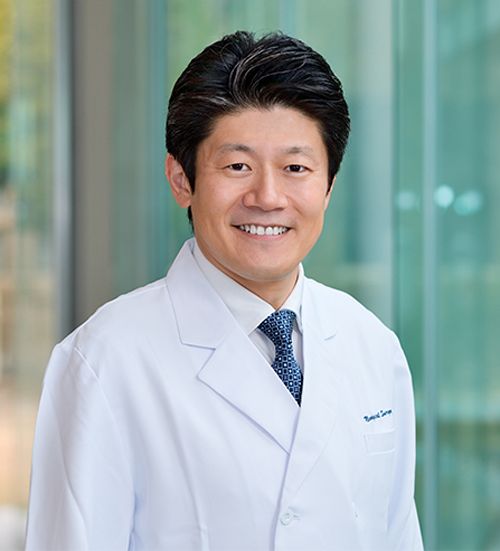Message from the Director of the Department
Our department performs surgery for diseases in the brain, spinal cord, and peripheral nerves. Safe treatment for brain tumors, cerebrovascular disorders, spinal diseases, functional neurosurgical diseases (epilepsy, Parkinson’s disease, facial spasm, and trigeminal neuralgia), pediatric neurosurgical diseases (hydrocephalus, craniosynostosis), head trauma can be performed. Many neurosurgical procedures (550–600/year) are performed to save the lives of patients.

Director, Department of
Neurological SurgeryShota Tanaka
Scope of Target Diseases
-Brain tumor: benign and malignant brain tumor in general including meningioma, vestibular schwannoma, pituitary adenoma, glioma, and malignant lymphoma
-Cerebrovascular disorder: unruptured and ruptured cerebral aneurysm, cerebral arteriovenous malformation, dural arteriovenous malformation, intracerebral hemorrhage, moyamoya disease, cavernous hemangioma, carotid artery stenosis, and intracranial vascular occlusion
-Spinal disease: cervical spondylosis, lumbar disc herniation, OPLL, spinal cord tumor, vascular disease, spinal trauma, Chiari malformation, arachnoid cyst
- Head trauma
-Functional disease: epilepsy, Parkinson’s disease, facial spasm, trigeminal neuralgia
-Pediatric neurological disease: Hydrocephalus, cranial dysplasia, myelomeningocele
Features and Description of Medical Care
Professionals in various fields of neurosurgery can administer appropriate treatments for all patients.
Front-line CT, MRI, and DSA equipment enables correct diagnosis and newly developed genetic diagnosis is useful for various brain tumors. In the operating suite, various surgeries are performed with microscopy, endoscopy, and exoscopy. For patient safety, intraoperative MRI, a navigation system, various monitoring systems, and hybrid surgery are useful to achieve simultaneous treatment with endovascular and direct surgery. Many surgeries are performed for patients with brain tumors and cerebrovascular diseases. Other than that, epilepsy surgery and pediatric craniofacial surgery can be performed in cooperation with related departments. Deep brain stimulation for movement disorder, spinal cord stimulation for intractable pain, microvascular decompression for facial spasm and trigeminal neuralgia, and spinal fusion are performed.

Department of Neurological Surgery enhances software/hardware to provide best treatment for each patient with correct diagnosis. Staff members with high performance can provide good medical care using first-line technology. However, we emphasize good spirit, skill, and physical conditions of staff members to determine therapeutic strategies for patients and to treat them like a family member. Continuous efforts are necessary to help patients with diseases of the brain, spinal cord, and peripheral nerves. We hope that patients and medical staff members will get together to enjoy a better life.

